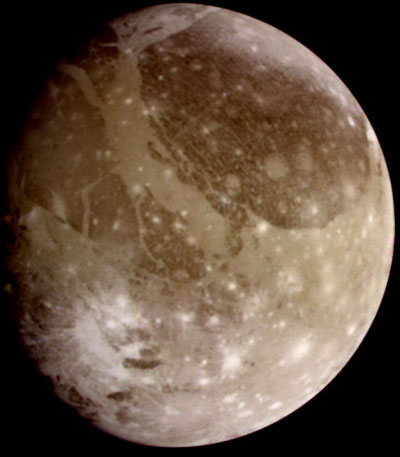Astronomy Picture of the Day
Discover the cosmos! Each day a different image or photograph of our fascinating universe is featured, along with a brief explanation written by a professional astronomer.

Credit: Galileo Project, JPL, NASA |
Explanation: If Ganymede orbited the Sun, it would be considered a planet. The reason is that Jupiter's moon Ganymede is not only the largest moon in the Solar System, it is larger than planets Mercury and Pluto. The robot spacecraft Galileo currently orbiting Jupiter has been able to zoom by Ganymede several times and snap many close-up pictures. Ganymede, shown above in its natural colors, sports a large oval dark region known as Galileo Regio. In general, the dark regions on Ganymede are heavily cratered, implying they are very old, while the light regions are younger and dominated by unusual grooves. The origin of the grooves is still under investigation. |
< | Archive | Index | Search | Calendar | Glossary | Education | About APOD | >
Authors & editors:
Robert Nemiroff
(MTU) &
Jerry Bonnell (USRA)
NASA Technical Rep.:
Jay Norris.
Specific rights apply.
A service of:
LHEA at
NASA/GSFC
&
Michigan Tech. U.